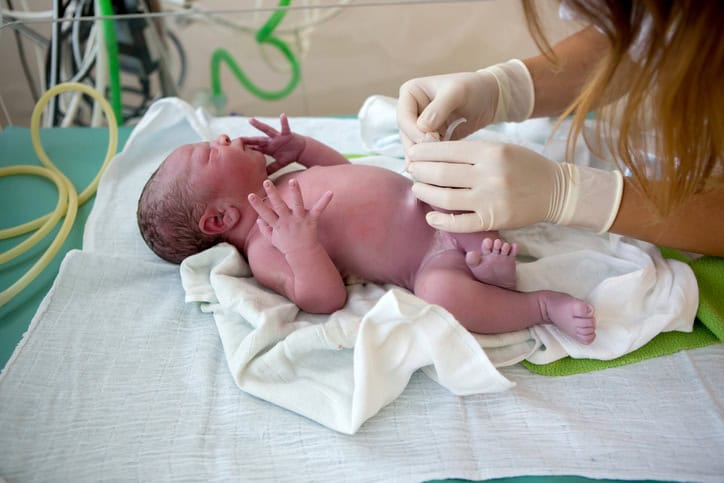Among the rush of tests and screenings in the delivery room, your doctor will check your newborn son to ensure their testicles have descended. During gestation, the testicles begin development in the abdomen of the fetus, and then descend into the scrotum at 32-36 weeks of gestation. To produce healthy sperm, most mammals’ testicles need a cooler environment than their body’s core temperature so males develop external sex organs to keep things cooler.
Here at Alzein Pediatrics, we know that in about 3% overall of human male babies, a testicle or two doesn’t reach the scrotum before birth, called cryptorchidism. At birth, one or both sides of the scrotum will be smaller than usual and flat. The scrotum make look lopsided.
Not surprisingly, the rate of cryptorchidism rockets up to 30% for premature babies, as the fetus had less time to develop and the testicle(s) had less time to make the trip from the abdomen to the scrotum.
However, the lack of gestational development time doesn’t account for all cases of undescended testicles. Researchers believe there is a range of other possible causes for cryptorchidism, including genetic predisposition and deviations in the pathway between the abdomen and the scrotum. There is no evidence that anything a pregnant person does or doesn’t do will cause cryptorchidism.
Most children with cryptorchidism do not experience any pain or discomfort. As many as 80% of undescended testicles resolve on their own by the age of 6 months, as your child’s body continues to develop. Your Alzein Pediatrics provider will examine your child’s genitals at each appointment to check on the location of the testicles.
If your child is 6 months old and the cryptorchidism has not resolved, we’ll consider surgically relocating the testicle to its proper place using an orchiopexy procedure. It can usually be performed as an outpatient procedure. The orchiopexy should be completed before your child reaches 18 months of age; waiting longer can result in the testicle being unable to develop and function normally.
Untreated undescended testicles increase the risk for inguinal hernias and testicular torsion, a painful and potentially dangerous condition where the testicle twists and cuts off the blood supply.
Long term, there are a few things to watch for if your child had an undescended testicle at birth. Undescended testicles have an increased likelihood of producing immature sperm, which increases the risk of fertility issues, particularly if the testicle isn’t surgically corrected in a timely manner. Immature sperm also increases the likelihood of testicular cancer, especially when the undescended testicle was located in the abdomen rather than in the groin. Surgical relocation decreases the cancer risk but does not remove the risk completely.
When properly treated, cryptorchidism has no effect on puberty or your child’s overall growth and development. If you have any questions or are experiencing stress about your child’s undescended testicle, message your Alzein Pediatrics provider. We’ll help you understand cryptorchidism and its effects on your child’s health.


